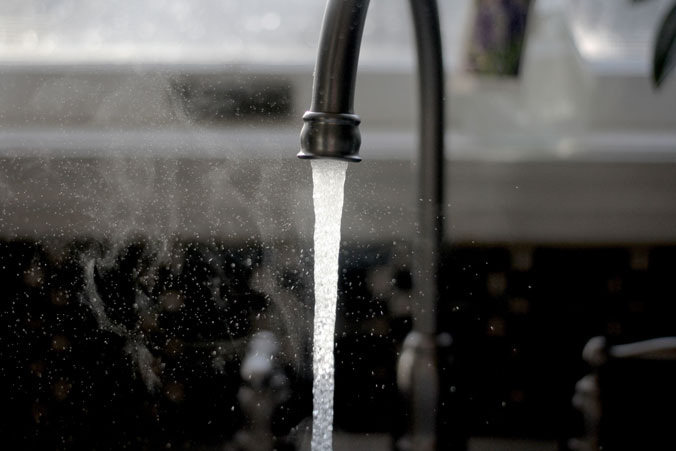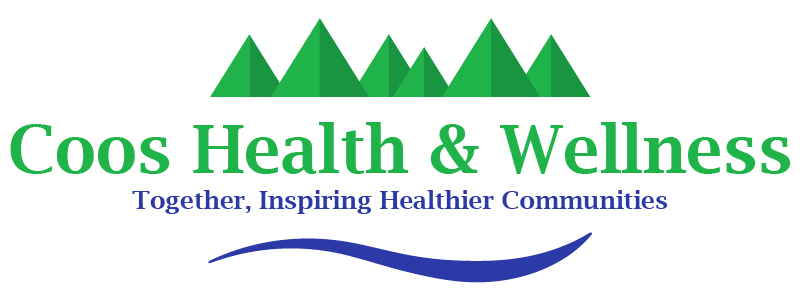
At least 20 percent of Coos County residents use water in their home plumbing that does not come from a public water supply. A public water company has the responsibility to assure water safety according to the laws of the state. Oregon law (OAR 333-061) defines what a public water system is and the Public Water System link provides some general information. There are no laws administered by local public health department regulating the safety of water that is considered non-public or private. Any landlord tenant laws related to providing safe water to a residence are not administered by the local health department. If you read such a law carefully it will outline how to seek relief when in a private context safe drinking water is at question.
The department does offer to collect water samples for a real estate transaction. This typically includes analysis for total Coliform bacteria, nitrates and arsenic. There is a fee for this service.
To request this service click on the Real Estate Transaction Water Test
The following information provides some keys on assuring a private water supply is safe from microbiological contaminants. Depending on the water source there may be other concerns such as chemical contaminants or distasteful minerals. The Coos County Environmental Health Department does not have resources to provide consultation for private water sources. There are water treatment supply companies as well as contractors that advertise competence in providing water treatment for residential use.
Some diseases may be spread through water used for potable purposes. Aside from drinking the water exposure might also come from water used for cooking, brushing teeth or any form of ingestion. If you believe you have become ill from drinking contaminated water, seek treatment from a physician. If lab tests show you have been infected by a reportable communicable disease that might have been spread via water, the Health Department may visit with you to try and determine what caused the illness and offer information to help prevent further recurrence of the illness.
The organisms that can lead to illness considered here include: Bacteria, Parasites, and Toxic Blue Green Algae. The risk of each of these organisms in water varies depending on where the water comes from in particular whether the source is ground water or surface water (click on the tabs below to learn more).
Some differences between Ground Water and Surface Water
Ground Water
To the layman, “ground water source” would be better understood if it was called “underground water source,” as the water in this category has seen no exposure to the air for weeks, months or even years. While underground the organisms of concern begin to die. Generally, the longer the water has been underground the safer it will be from a microbiological threat. A properly drilled well or developed spring could be examples of ground water sources.
Surface Water
Any water body that is on the surface of the ground is considered surface water. A pond, lake, river or streams are examples of surface water sources. There is a higher risk of microbiological contaminants in surface water as it is directly influenced by any animal, plant or other organism activity that could fall, drain or grow into the surface water source.
Most risks Are Based on the Type of Water Source in Use Plus How the Source is Developed
Ground Water
A properly constructed spring will have a collection box encasing where spring water is funneled into pipes leading to where the water will be used. Any collection piping will be covered with impermeable material that will exclude surface water from entering the collection system. Ideally no surface water or moisture will collect immediate above or over the collection piping. Water spilling from the spring collection box must drain away from the box at a grade leaving no possibility of water pounding against the box. An end of a pipe coming from the spring box that is exposed to open air, such as an overfill drain or a vent must be provided with a fine mesh screen. The spring collection system may be no closer than 100’ from where septic effluent receives DEQ approved treatment.
Surface Water
Here are some examples of sources that will have risks much like a surface water source.
- A well that is near a river bank and is fed by the river. Proximity to a river is common as volume and accessibility of water in a shallow well generally decreases as a potential well site is moved further from the river. As alluvial material provides some filtering of microorganisms before the water is being pumped from the well, safety from microorganisms increase as a potential well site is moved further from the river.
- A well that runs low or dries up at certain times of year, but within a few hours of a rain storm water yield dramatically increases. The water for such a well receives some filtering from the soil it runs through, but the short duration is inadequate to eliminate many microorganisms.
- A spring where there is moisture immediately above the spring collection area is at risk of having the moisture or water from the surface seep into the collection pipes carrying microorganism that are not visible to sight.
Bacteria and Parasites
Ground Water
It is common for bacteria to be found in well water even in a properly constructed well where ground water is used. Many water labs offer home owners sample testing for Total Coliform bacteria. Such a lab will provide instructions on how a layman can safely collect a sample. Total Coliform are indicator organisms, suggesting, when present, that something might be wrong. When a water lab finds that Total Coliform are present, they will look closer for pathogenic disease causing bacteria. Even when further testing finds no pathogens, a concern may still exist, as pathogenic bacteria could follow the same route the coliform bacteria used to contaminate the water. If this concern cannot be addressed disinfection may be in order. Common means to disinfect or eliminate bacteria include: chlorination, ozone, ultra violet light and reverse osmosis. As parasites cannot survive in true ground water, they are not considered a ground water risk.
Surface Water
Both bacteria and parasites are inherent with surface water and are assumed present in untreated water. Because disinfection is not always effective at eliminating parasites, two part treatment is applied for all surface water used for municipal water. It is filtered to physically remove parasites and then disinfected to destroy bacteria. Parallel treatment for surface water is suggested here for private domestic use. When considering a filter for removal of parasites read manufacturer’s specifications carefully. To be effective against parasites the final filter size can be no greater than 1 micron. Filters in graded sizes, from large to small, are often used in series to maximize the life of the 1 micron filter. Be cautious of “maintenance free” claims. Ideally a filter manufacturer would provide comparative information about the filter’s treatment capacity and flow capacity.
When a 1 micron filter is used for surface water, disinfection is also needed to destroy any pathogenic bacteria. Common means to disinfect or eliminate bacteria include: chlorination, ozone, ultra violet light and reverse osmosis. Be cautious of “maintenance free” claims for a disinfection system.
The effectiveness of disinfection may be checked by testing for Total Coliform bacteria. Many water labs provide sample testing for Total Coliform bacteria in private water sources. Such a lab will provide instructions on how a layman can safely collect a sample. If Total Coliform are found present in treated water it means bacterial contamination has occurred.
Sample results showing water is free from Total Coliform does not mean it is free from parasites. Very few labs test samples for parasites and both the expense and inconvenience to a lab discourages people from testing. Because parasites are presumed present in all surface water, the expense of sampling is best applied to maintaining an effective filter system to remove the parasites.
Toxic Blue Green Algae
Ground Water
Blue Green Algae cannot grow without sunlight and is not a known risk in true ground water.
Surface Water
Under certain conditions some species of blue-green algae (BGA)in heavy bloom will produce toxins in concentrations that when absorbed through the skin or consumed or are dangerous to life. Sru Lake and South Tenmile lake are the two places in Coos County where dangerous toxin levels from BGA have intermittently been identified. Filtration as described above for surface water treatment does not eliminate toxins and some disinfection to BGA cells can release more toxin to the water system. It is complicated to concurrently treat surface water for bacteria, parasites and BGA. Because of this the health department recommends abandoning use of any surface water for domestic use where there is a potential BGA bloom. Though every algae bloom is not necessarily toxin forming blue green algae, water for domestic use is best obtained from a safe source. Do not use water subject to BGA bloom for domestic use. Although toxin testing may occur, results are not considered comprehensive. Results for water tested several days ago does not necessarily reflect today’s risk. Results for water tested in the middle of a lake might not reflect the risk to water where you obtain it. For more information about algae toxins go to OREGON.gov and search for Harmful Algae Blooms.
Private Wells and Water Systems
In an emergency, hauling water may be an option. Guidance for safe hauling is found in the attached document. Drinking Water Hauling Guidelines
It’s important for all of us to have clean drinking water.
Resources:
Oregon State University has some excellent information for homeowners and others who use private wells or other private water systems. OSU’s Well Water Program
Private Drinking Water Wells Page(United States Environmental Protective Agency )
The Environmental Protection Agency also maintains an informative Website on safe drinking water.
Note: Aside from sampling for a real estate transaction, the heath department does not routinely test private water.
Additional Resources:
Tenmile Lakes Basin Partnership
